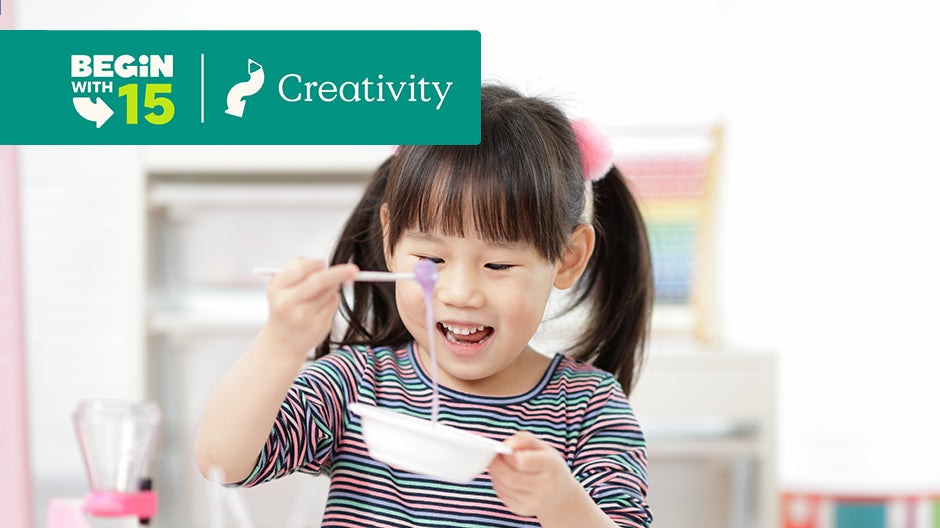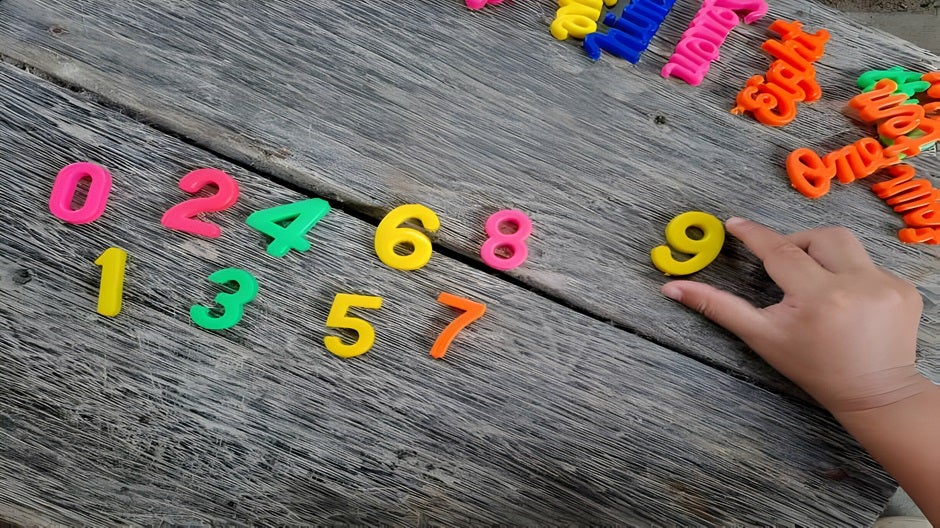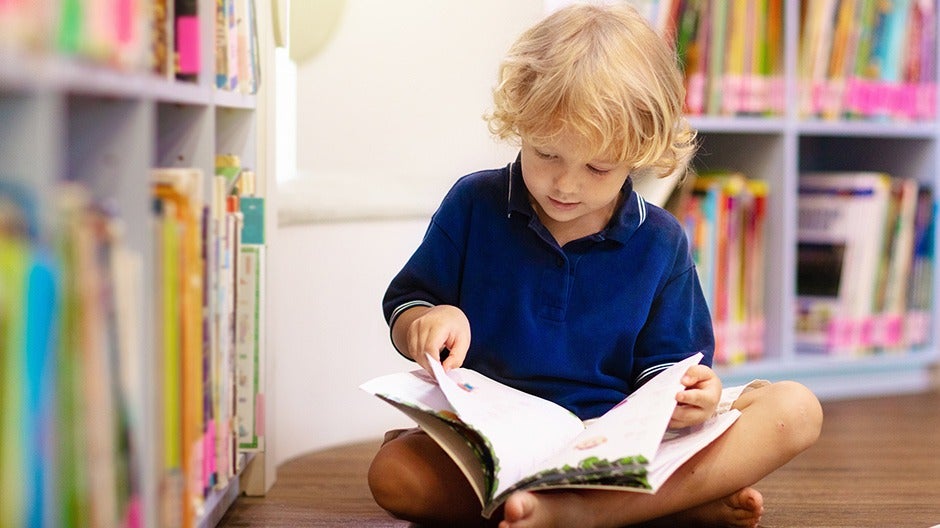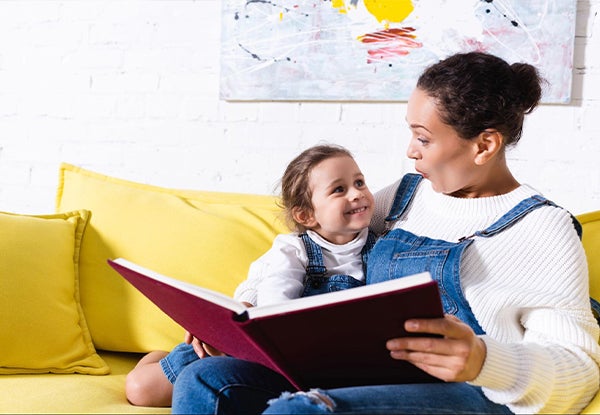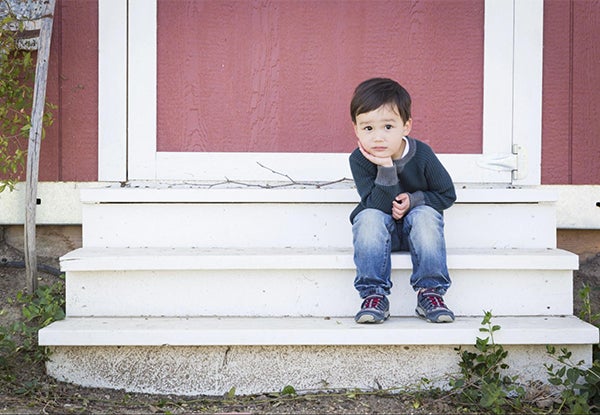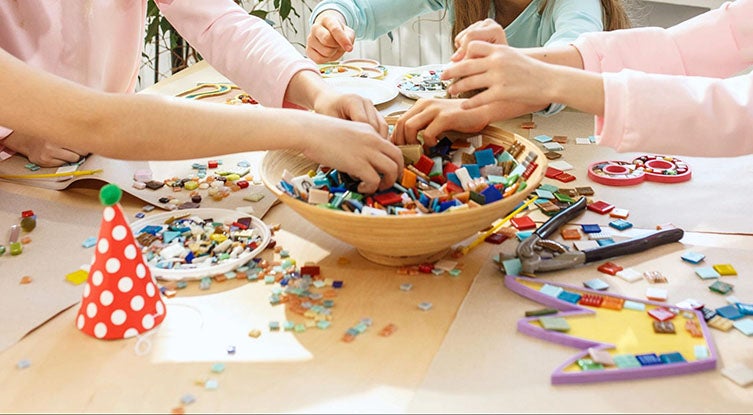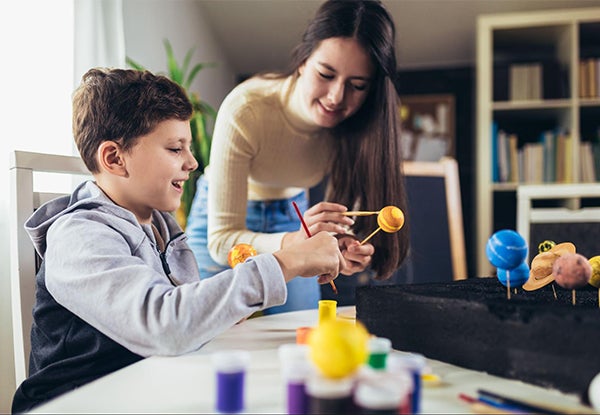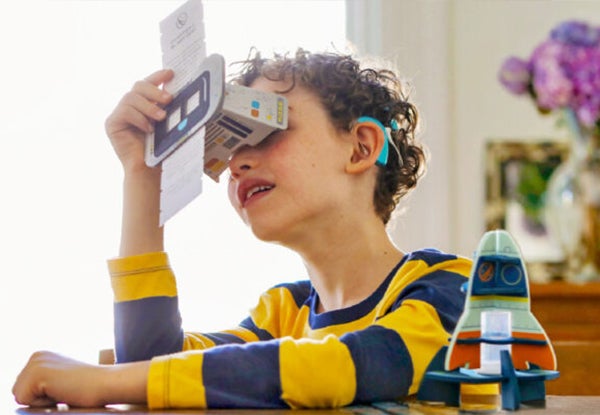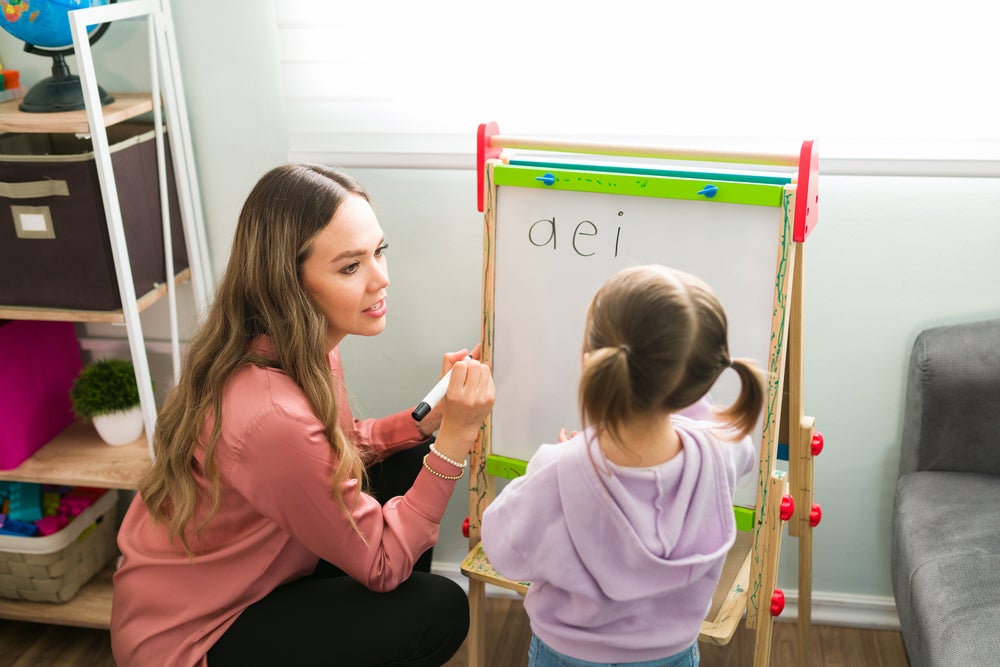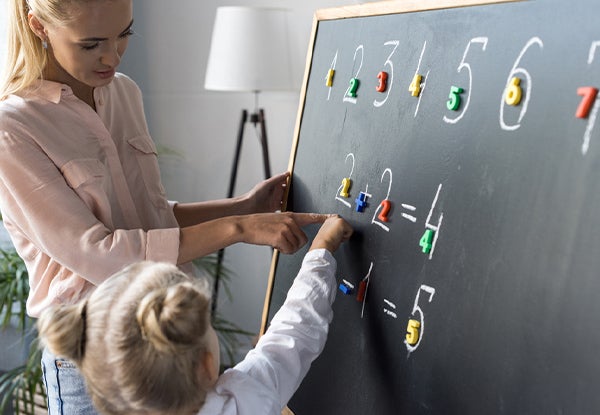Do you remember when you first learned about syllables? Most people will answer “no” to this question, and that’s understandable — it was a very long time ago!
Regardless of how long ago it was, understanding syllables has played a significant role in helping you read and write more proficiently. And now that your child is on their journey of learning about syllables, you may want to know how you can help.
This article will share what you need to know about helping your child understand syllables so that they can master this simple yet effective learning curve.
What Is A Syllable?
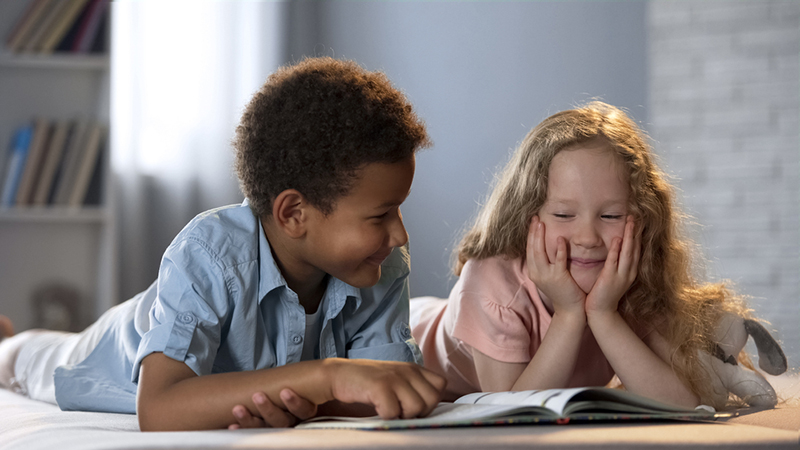
The dictionary describes a syllable as “an uninterrupted segment of speech consisting of a vowel sound, a diphthong, or a syllabic consonant, with or without preceding or following consonant sounds.”
In much simpler terms, we can describe a syllable as always having one (and only one) vowel sound. Quite often, this vowel sound is accompanied by consonants.
For example, the word bat is a one-syllable word, as you would expect because of its length. But it’s important to note here that the length of a word has nothing to do with how many syllables it has.
The word straight, for instance, has only one syllable since aigh makes the long A sound and that is the only vowel sound in the word. On the other hand, a shorter word — such as over — can have more than one syllable.
It’s also important to note that there are six types of syllables: open, closed, silent E, vowel pair, R-controlled, and final stable. Your child will start learning more about the different types of syllables in elementary school.
For now, understanding the basic elements of a syllable is what matters. This comprehension will help children as they get older and come across more complex words.
Why Is Understanding Syllables Important?
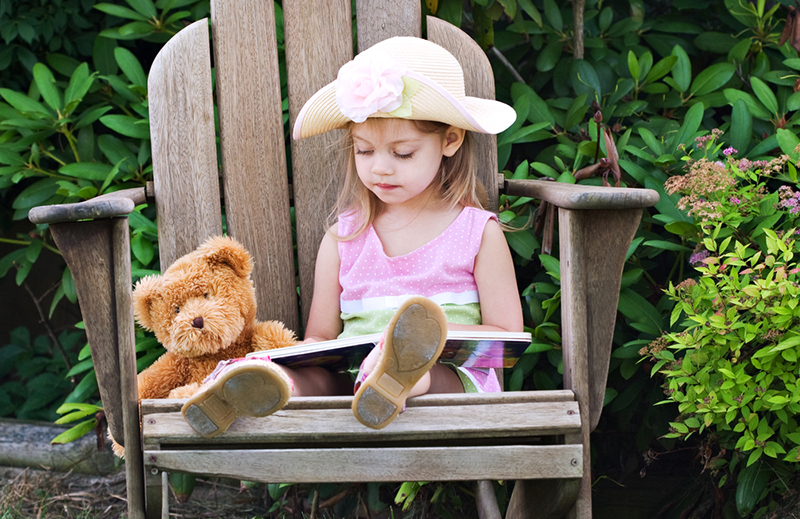
Now that we’re on the same page about what syllables are, let’s focus on why they are so important.
In a nutshell, learning syllables:
- Helps speed the process of decoding words
- Helps with accurate and fluent reading
- Helps with spelling
As children move from learning basic words to compound words with two syllables (e.g., railroad, pancake, etc.), understanding syllables can help them decode and blend them more quickly.
After all, it’s much easier to read an unfamiliar word in chunks than to read it as one continuous string.
Additionally, breaking a long word down into pieces makes it much easier to spell it correctly, rather than trying to remember each and every letter in the word and the correct sequence.
How To Help Kids Understand Syllables
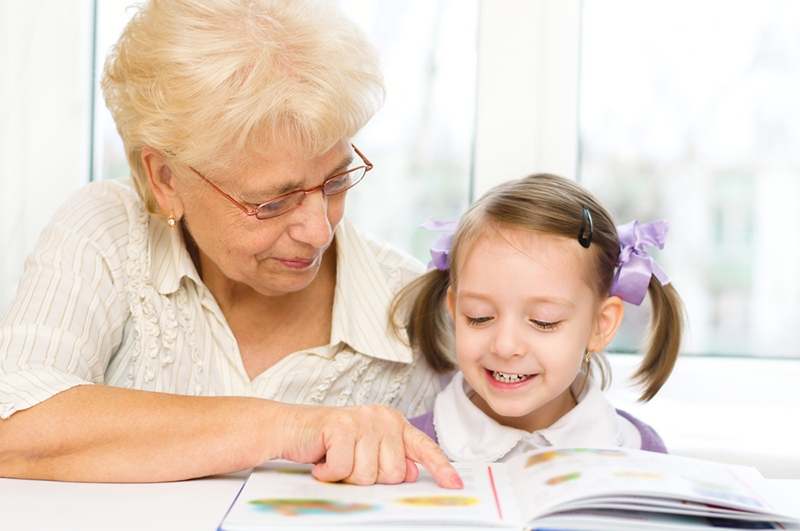
Before we get into the activities that can help you teach your child about counting syllables, there are a few points we’d like to mention. Let’s take a look!
1) Think Of Syllables As “Chunks” Of A Word
With multi-syllable words, helping your child focus on the “chunks” rather than every letter of a long word will make grasping syllables much easier.
Breaking a longer word into pieces is an effective reading strategy that can help your child improve their reading speed and comprehension. It’s a strategy you likely use without even thinking about it anymore.
For example, if you see a long word, such as uncomplicated, your brain automatically applies what you know about syllables to make reading it a breeze.
You know that there’s a prefix (un) and a suffix (ed). Once you remove those chunks, you can easily break the remaining letters down into even smaller pieces: comp, li, cat. And you know that the A in that final syllable is long even though it looks like the word cat.
Then, your brain puts everything together again like this: un-comp-li-cat-ed. While it sounds like a hard process when you see it written out, all of this goes on behind the scenes in your mind. You no longer have to stop and decode every single word. It’s automatic.
And that’s the goal of this process: to help kids learn how to automatically break words down into pieces that are easier to read.
Of course, it won’t happen overnight. It’ll take years of learning and practicing. But each time you work on it together, you’re helping build a solid reading foundation.
2) Focus On The Vowel Sounds
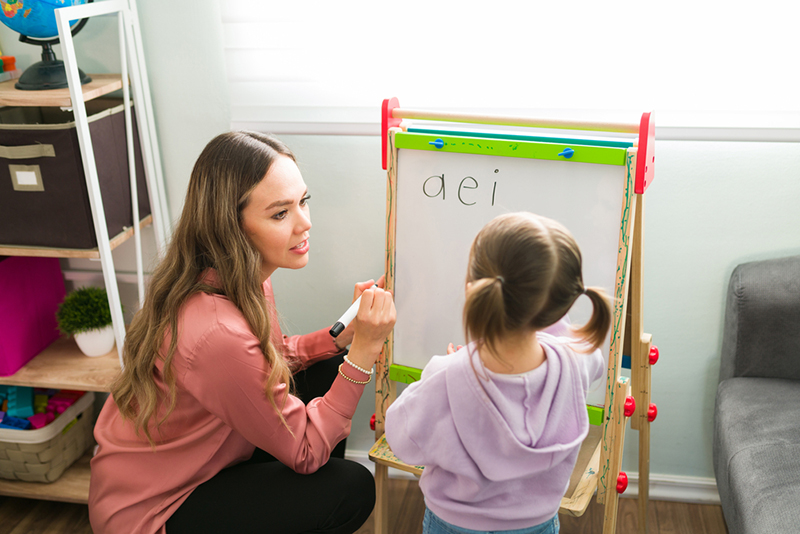
A syllable only has one vowel sound. This means it doesn’t matter how many letters there are in the syllable. It also doesn’t matter how many vowels a syllable may have. The vowel sound produced is the real focus.
The first words your child reads will likely be short-vowel, one-syllable words, such as:
- Cat
- Fan
- Map
- Flag
- Clap
These words have only one vowel sound — often in the middle of the word — and are taught early on.
However, it won’t be long before your child will be reading words with multiple vowel sounds, such as:
- Paper
- Freedom
You have the letter A in the word paper, making the long A sound. Then, at the end, you find the vowel E being bossed around by the letter R to make the er sound. That means there are two different vowel sounds in this word.
If you count the vowels in the word freedom, you’ll find three vowels — two E’s and an O. However, since the two E’s work together to make a single vowel team, there are only two vowel sounds in this word.
Having a better understanding of how vowel sounds work will give your child the decoding skills they need to tackle multisyllabic words confidently in the future.
3) Continue Helping Them Develop Their Reading Skills
Reading is one of the core subjects in our HOMER app‘s early learning program. Why is that?
Early childhood reading provides lots of benefits, including improved vocabulary, better communication, and brain development.
In addition, the more a child reads, the more they’ll come across unfamiliar words and the more chances they’ll get to practice their syllable skills.
At this early-reading stage, it’s not important for your child to thoroughly understand the concept of syllables. They may not be able to correctly define the word or know the differences between the types of syllables.
And that’s OK! Your goal right now is to simply introduce the concept.
Then, when they’re learning even more about syllables later, they’ll have the background knowledge they need to anchor their learning. They’ll think back to these fun activities you used to do together and have an “ah-ha” moment when everything clicks.
So, don’t worry if this concept seems challenging for your child right now. Just keep talking about syllables and doing these activities. Over time, you’ll help your child strengthen their reading skills.
And, since you’re doing it through play, they won’t even realize they’re learning.
8 Simple Syllable Activities
No matter what you’re working on with your child, it’s important to keep things light and fun! This helps your child stay engaged and eager to learn.
A great tactic you can use for teaching syllables in an engaging way is to start with words that already interest your child. These can be the names of the family pets, their friends, their favorite foods, and so on.
Here are some activities to help your young learner understand syllables while also having fun!
1) Clap Time

Associating the syllables of a word with “beats” is one of the most effective (and fun!) ways for children to grasp the concept of syllables. In this activity, your child will clap the beats of a word.
Start with simple words that your young learner will already be familiar with (mommy, daddy, apple, pizza, etc.).
When you begin, show your child how to clap the syllable: /pi/ (clap) /zza/ (clap). After demonstrating, ask them to join you as you clap the beats of other common words.
We recommend holding your hands wide apart and then making a big clap to help your child hear and see the number of syllables. Try to also have your child clap and say the syllable at the same time.
Don’t feel limited to two-syllable words for this activity. Instead, throw in some shorter, one-syllable words and longer, three or four-syllable ones. This way, your child understands that words come in all different lengths.
To help you mix things up, here are a few common words you can clap with your child, broken down by the number of syllables.
Single-Syllable Words:
- Tree
- Sign
- Book
- Shirt
- Shoe
Two-Syllable Words:
- Toybox
- Mountain
- Freeway
- Sweatshirt
- Toenails
Three-Syllable Words:
- Vacation
- Celebrate
- Afternoon
- Computer
Four-Syllable Words:
- Calculator
- Avocado
- Television
- Cauliflower
- California
Throughout the day, pick a couple of words to clap the beats of. This way, it becomes second nature for your child to think about the syllables in a variety of words.
2) Syllable Stomp
Sometimes we all make the mistake of thinking that learning should only take place with a child seated formally in front of a desk and listening attentively to your instructions. But that’s not always the case, especially with younger children.
Most kids love to get up and move. So why not use their endless energy to help them learn more about syllables?
This game works similarly to the previously mentioned one. However, instead of clapping each syllable, your young learner will be stomping the ground for each syllable they say in a word. The louder the stomp, the better!
3) Mark The Paper
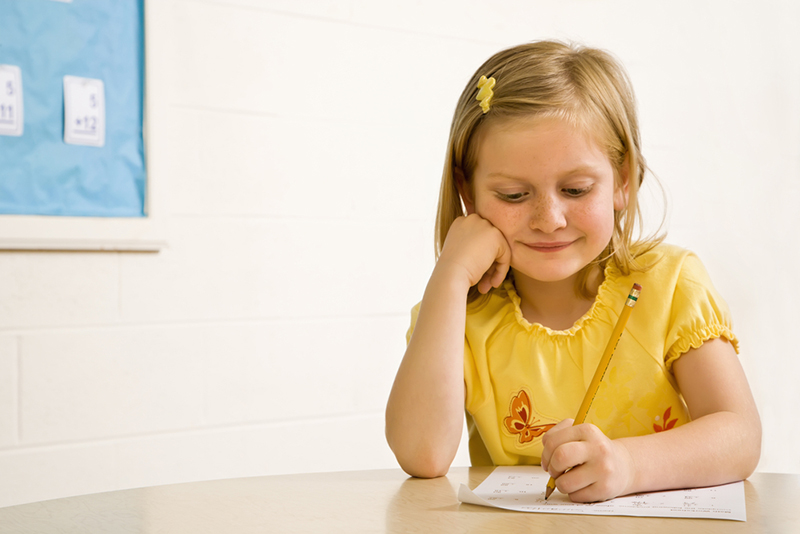
For this activity, all you need is a marker (or pencil or crayon, whatever you prefer!) and a sheet of paper.
Hand your child the marker and place the sheet of paper on a table in front of them. Choose a word, and then encourage your young learner to press the marker on the paper every time they hear a syllable.
When they are done, they can count the number of marks on the paper to see how many syllables are in the word.
4) Hum The Word
Humming is a simple yet fun and effective way to teach your child about syllables. To get started, ask your child to close their mouth and hum a word. After that, have them count the distinct hums they made.
If your child has trouble with this, have them say the word aloud before they try humming it. You can also hum the word first and ask them to copy you. This modeling can give them the confidence they need to hum words on their own.
5) Robot Talk

“Speaking robot” is more than just fun and games. It can also help your young learner count the syllables of a word!
Have your child pretend to be a robot while talking. This will mean speaking in a very unnaturally stiff and stilted manner. As they say a word in “robot talk,” it is easy to count the syllables.
Really get into it by making a robot costume out of cardboard boxes for the occasion. Pretend play and learning time combined? Yes, please!
6) Hunt And Hop
Look around your home for a few simple items you can hide for your child to find. Try to pick objects with a different number of syllables.
Here are a few ideas:
- Key
- Jacket
- Potato
- Calculator
Once you hide them, ask your child to find one. For example, you can say, “Can you find the potato?” Let your child look around the room, hunting for the object you name.
Ask your child to say the word when the hidden item is found. Then, have them hop the number of syllables. For example, if your child found a potato, they’d jump three times.
Next, ask them to find another object. Continue until everything you’ve hidden has been found. Then, review the syllables once more. Have your child hop the right number of times for each object that you hid.
7) Jaw-Dropping Fun

By now, we’ve established that each syllable has one vowel sound. Our mouths need to open to help us make that vowel sound. This makes counting “jaw drops” the perfect opportunity to count syllables.
Have your child place their hand under their chin and then count the number of times their jaw drops as they say a word. Those are the syllables!
If your child is having trouble with this, have them look in a mirror while they play. First, ask them to watch their mouth carefully while they say a word. Then, gently put your finger on their jaw. Finally, ask them to say a word.
As their mouth opens and closes, count each jaw drop aloud. Next, have your child put their hand where yours is. Once they understand what action they’re counting, they’ll be able to do this activity more independently.
8) Syllable Mix-Up
This fun game will help your child concentrate on unmixing syllables to make a word.
All you need to do is mix up the syllable order of a word and then encourage your child to unmix it. For instance, you can say /corn/pop. Then ask them what word you’re trying to make. They would answer “popcorn.”
As your child gets older and more comfortable with syllables, you can introduce harder words with three or more syllables. For example, /phant/e/el — elephant!
Once your child understands how to unmix the syllables, this is a fun, educational game to play in the car. Since it doesn’t require any materials, you can play it wherever you are.
You can give your child a mixed-up word, and then they can give you one to figure out. Take turns mixing and unmixing words until you arrive at your destination or you both get tired of the game.
Use the things around you in the car and on the road as ideas for words to mix up.
9) What’s My Word?
Say a word with three, four, or more syllables but leave gaps in between each syllable. For example, you can say /com/ /pu/ /ter. Your child would then put the syllables together to form the word.
You can also extend this game by beginning a word and having your child try to complete it. For instance, /re/ /frig/ /er/…and your child would add “/a/tor!”
If you notice your child missing a syllable when they complete your word, don’t worry. Sometimes, they’re so busy focusing on syllables they don’t have enough mental energy left to think about the word.
Simply repeat the word and add the correct syllables to the end if this happens. Then, ask your child to say what you said. You can try it again later with a more familiar word to see if that helps.
10) Syllable I Spy

You can also incorporate syllables into familiar childhood games, such as “I Spy.”
To play this game, look around the room and pick an object you’d like your child to find. Then say, “I spy with my little eye something with two syllables.”
As your child guesses, you can reinforce their syllable knowledge. For instance, if they name something with only one syllable, you can say, “That is a good guess, but that word only has one syllable. I’m thinking of something with two syllables.”
If they pick something with two syllables that isn’t the item you’ve selected, you can say, “That’s a great guess. You picked a word with two syllables. But it wasn’t the word I was thinking about. Can you find another item with two syllables?”
Because there can be a lot of things in a single room, it may be helpful to give your child a hint or two after they make an incorrect guess. Is the item brown, or is it made of wood, etc.?
Once they’ve correctly guessed your item, switch roles. Have them pick something and tell you how many syllables the item they’re thinking of has. Then, you try to guess.
11) Syllable Sort
Ask your child to go around the house and gather several small items. Have them place the items on a table or another flat, level surface.
While your child is off collecting things, gather two pieces of printer paper. On one of them, write “1 Syllable.” On the other piece, write “2 Syllables.”
Once your child returns, show them the papers you prepared. Point to the number on each so your child can see the difference between them. Ask your child to select one item they found and say what it is. Then, repeat the word. Ask, “How many syllables is in this word?”
Next, have them place the item on the corresponding piece of paper. So, if it’s a one-syllable word, it would go on the “1 Syllable” paper.
Continue talking about each object and sorting them. When everything is sorted, ask your child to name the objects with one syllable and then those with two syllables. Keep going until everything has been named.
Once you’re done playing, you can ask your child to put the objects away by syllable count, too. For example, have them take all of the one-syllable items and put them where they belong. Repeat this process until everything is put away.
Make Learning Syllables Fun With HOMER

There are plenty of ways to help your child understand syllables. Whichever activity you choose, remember to make it fun and have patience as your child continues learning new concepts.
For more at-home activities to help your child learn to read, check out HOMER, which is perfect for kids two to eight years old and makes learning fun, convenient, and effective. Just 15 minutes a day is proven to increase early reading scores by 74%!


